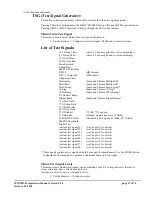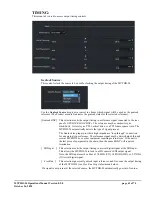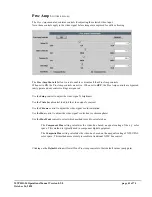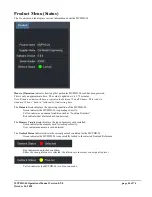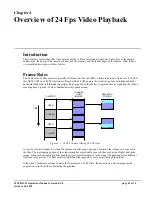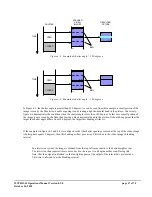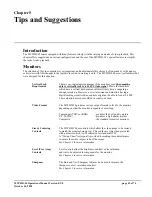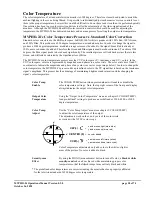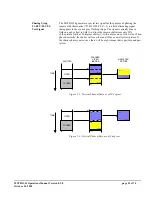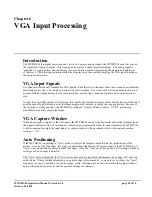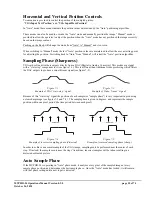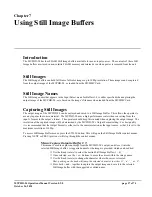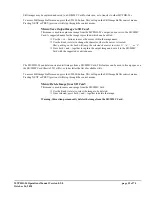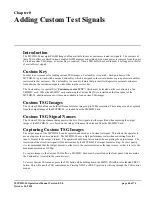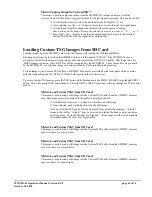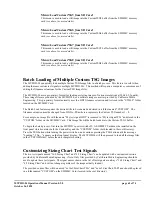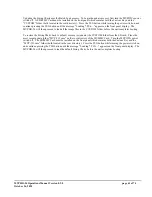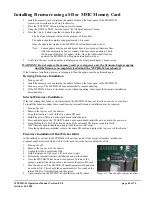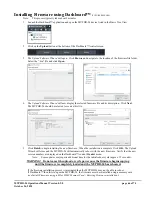
MVPHD-24 Operations Manual Version 0.9.0 page 51 of 74
October 26, 2020
Synchronization
For proper setup, the Camera(s) and the television monitor(s) must be synchronized. This is typical done by
supplying a master reference to all the cameras and video equipment used.
MVPHD-24 as Master Reference
MVPHD-24
The MVPHD-24 has an internal sync generator which may be used for the
as Master
master reference. The MVPHD-24 generates TTL Frame, TTL Vertical Drive,
Reference
TTL composite sync, Tri-level sync, and Black Burst signals to synchronize
other equipment.
Single Film Camera as Reference
Single Film
For single film camera shots, it is possible to use the shutter signal from the
Camera as
film camera as the master reference. This eliminates the need and expense
Reference
for a camera sync box. The MVPHD-24(s) will receive the camera’s frame or
V-drive signal and synchronize the video monitor(s) to it.
Note
: If the shutter signal is created mechanically, color phase (tint) errors
may occur in composite and Y/C outputs. For mechanical shutter signals,
it is recommended to use component video as the output format.
Genlocking: No Need For Black Burst
Genlocking:
Unlike most video converters which require a black burst video signal for
No Need For
genlock, the MVPHD-24 will lock to most anything. The MVPHD-24 only
Black Burst
requires a vertical signal which can be in the form of a Frame square wave,
Vertical Drive, Composite sync (no burst), Black burst, or high definition
Tri-level sync. The MVPHD-24 will also generate all of the above regardless
of the form of the input (
see Chapter 3: Reference Outputs
). This eliminates
the need and expense for miscellaneous sync converter boxes.
Phasing the Camera’s Shutter
It is important to vertically phase the camera with the television monitors to eliminate any artifacts. As described in
Chapter 4 (
Overview of 24 FPS Playback
), even if the shutter angle is exactly 180 degrees there can still be motion
splitting if the camera and monitor are not in alignment. Traditionally, the camera is phase aligned by looking at the
television monitor with the view finder and adjusting the camera phase until the artifact is out of the picture. This
can be difficult if the shutter angle is exactly 180 degrees because the artifact may not always be visible. The
MVPHD-24 generates a special test signal to simplify this task (see below).
Phasing Using a Sync Box
Phasing Using
For multiple camera shots, it’s usually required that each camera have its
a Sync Box
own synchronizer box. This allows the shutter phase of each camera to be
adjusted with respect to a reference. This reference can be a master sync
generator, or the MVPHD-24. The camera sync box will have a phase control
which will be used to vertically phase the camera.
Single Camera Phasing Using the MVPHD-24
Single Camera
For single camera shots, it is possible to lock the MVPHD-24(s) to the sync
Phasing Using
or shutter signal from the camera, and eliminate the camera sync box. In this
the MVPHD-24
configuration, the television monitor(s) will be phase adjusted instead of the
camera. The procedure is similar, except the “Vertical Phase” control menu on
the MVPHD-24 is used to make the adjustment (
see chapter 3:Vertical Phase
).
Note
: The phase of the sync reference outputs will also be adjusted by the
vertical phase control. If multiple MVPHD-24s are genlocked together, one unit
can serve as the master reference. The slaved units will automatically stay in
phase alignment with the master MVPHD-24.

